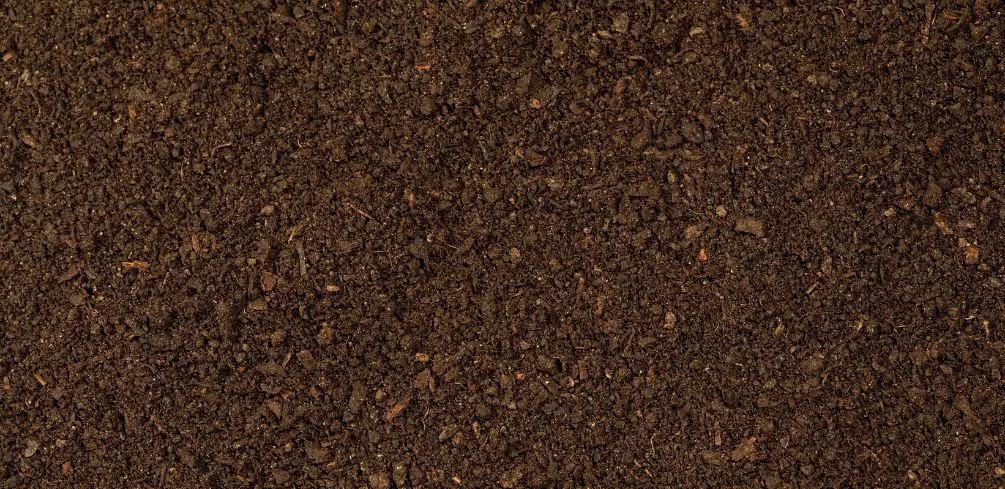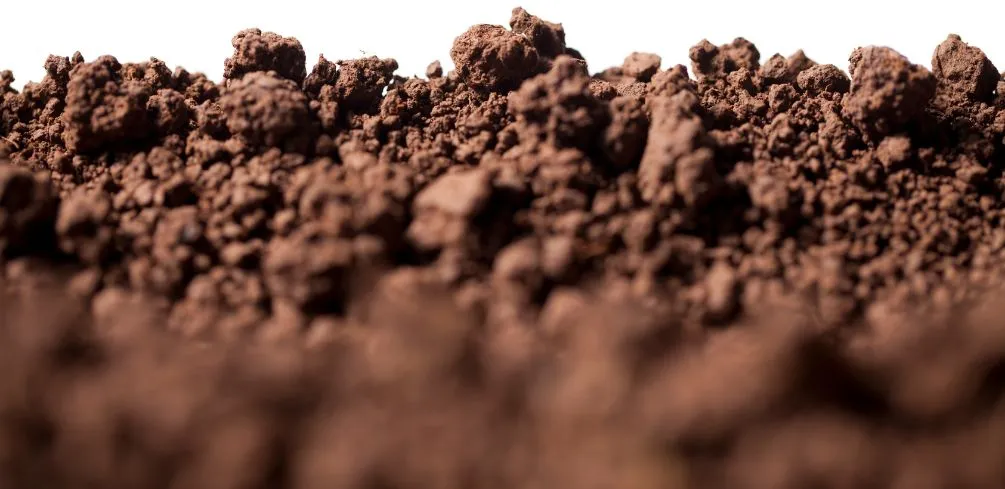Soil is the foundation for all life on our planet. It provides us with the food we eat, the water we drink, and the air we breathe. However, soil quality has been increasingly degraded due to human activities such as deforestation, overgrazing, and intensive agriculture.
Improving soil quality is crucial for sustaining healthy ecosystems and ensuring global food security. There are several ways to improve soil quality, including adding organic matter, reducing tillage, practicing crop rotation, and using cover crops.
These methods not only enhance soil fertility but also increase water-holding capacity, reduce erosion, and promote biodiversity. By implementing sustainable agriculture practices that prioritize soil health, we can ensure that future generations will have access to healthy and productive soils that support a thriving planet.
The Importance Of Soil Quality
According to recent studies, around 40% of the world’s soil is degraded due to various natural and human-induced factors.
This alarming statistic highlights the importance of soil quality in maintaining global food security and biodiversity. Soil quality refers to a combination of physical, chemical, and biological properties that determine its ability to support plant growth and maintain ecosystem functions.
Soil testing is a crucial tool for assessing soil quality, as it helps identify nutrient deficiencies or excesses that can impact crop yields and environmental health. Nutrient management is an essential component of maintaining good soil quality.
The proper balance of nutrients such as nitrogen, phosphorus, and potassium can enhance plant growth and improve soil structure. However, excessive use of fertilizers can lead to nutrient runoff into nearby water bodies, causing eutrophication and harming aquatic life.
Therefore, efficient nutrient management practices that minimize fertilizer use while maximizing crop productivity are necessary for sustainable agriculture. By promoting good soil quality through proper testing and nutrient management practices, we can ensure the long-term health and productivity of our soils for generations to come.
Causes Of Soil Degradation
As we have discussed in the previous section, soil quality is of utmost importance for agricultural productivity and sustainability. However, despite its significance, soil degradation is a significant issue faced by farmers globally.
Soil degradation can occur due to various factors such as erosion, chemical pollution, and nutrient depletion. In this section, we will explore the causes of soil degradation in more detail.
Erosion prevention is essential to maintain soil quality. Erosion can occur due to natural causes such as wind and water or human activities like tilling and deforestation. Erosion can cause topsoil loss leading to reduced fertility and crop yields.
Chemical pollution is another factor that contributes significantly to soil degradation. The use of pesticides, herbicides, and fertilizers can accumulate toxic chemicals in the soil leading to the contamination that harms the ecosystem’s balance.
Therefore, it is vital to implement sustainable farming practices that reduce erosion and promote organic methods such as crop rotation or intercropping while minimizing the use of chemicals that harm the environment.
By doing so, we can improve dirt quality while also promoting agricultural sustainability.
Adding Organic Matter For Improved Soil Health
As we work towards improving dirt quality, the organic matter becomes an essential component for achieving soil health. Organic matter refers to any material derived from living organisms, including plant and animal residues.
This matter plays a significant role in providing essential nutrients for crops, increasing water-holding capacity, and enhancing soil structure. With the use of organic matter, farmers can improve soil health through reduced erosion, increased nutrient availability, and improved crop yields.
Composting benefits are one of the techniques used to add organic matter to the soil. Composting involves the decomposition of plant and animal residues into rich humus that is added to the soil.
The process involves breaking down these materials using microorganisms such as bacteria and fungi. Another technique is cover cropping, where farmers grow certain crops primarily for their benefit on the land rather than for harvest.
Cover crops help suppress weeds, reduce erosion, increase biodiversity, and provide organic matter when they decompose after being tilled into or mulched on top of the soil.
Adding organic matter through these techniques can lead to long-term improvements in soil health, which can benefit both farmers and consumers alike by increasing agricultural productivity while maintaining sustainable farming practices.
Sustainable Agriculture Practices For Soil Improvement
Sustainable agriculture practices have been introduced as an effective way to improve soil quality while protecting the environment.
Crop rotation is one such practice that involves alternating crops in a particular field over time. This method helps to reduce pests and diseases that can accumulate in the soil, as different crops have different nutrient requirements, thereby providing a balanced nutrient mix.
The process also prevents soil erosion by promoting root development and enhancing water retention capacity, which ultimately leads to increased productivity.
Cover crops are also essential sustainable agriculture practices that help improve soil health. Cover crops refer to non-cash crops planted between cash crop seasons. These plants help protect the soil from erosion caused by wind or rain, prevent nutrient loss, and suppress weeds that compete with cash crops for nutrients.
They also increase organic matter content in the soil and promote beneficial microbial activity, which enhances nutrient availability for plant uptake. Ultimately, implementing these sustainable agriculture practices leads to improved dirt quality, higher yields, and a healthier environment for future generations.
By adopting crop rotation and cover crop methods in farming systems, farmers can improve their crop yield and maintain healthy soils without resorting to chemical fertilizers or pesticides that harm the environment. The benefits of these sustainable agricultural practices are far-reaching and long-lasting for both farmers and consumers alike.
With continued research efforts on these techniques, it is possible to develop more effective ways of improving dirt quality while reducing environmental impacts further.
Benefits Of Improving Soil Quality For Ecosystems And Food Security
Sustainable agriculture practices are crucial in ensuring the improvement of soil quality for better crop yields and ecosystem services. The use of organic fertilizers, crop rotation, and cover crops helps to enhance soil structure, increase water retention capacity, and reduce soil erosion.
Organic farming practices avoid the use of synthetic pesticides and fertilizers that can harm the environment, wildlife, and human health. These sustainable agricultural techniques improve soil health by promoting beneficial microorganisms that break down nutrients and help plants absorb them.
The benefits of improving soil quality extend beyond just crop yields. Ecosystem services such as carbon sequestration, nutrient cycling, and wildlife habitat are also enhanced by healthy soils.
Healthy soils store carbon dioxide from the atmosphere through photosynthesis, which reduces greenhouse gas emissions that contribute to climate change. Additionally, healthy soils support diverse plant communities that provide food and habitat for wildlife.
By promoting sustainable agriculture practices that focus on improving soil quality, we can ensure a more resilient food system while protecting our natural resources for future generations.
Frequently Asked Questions
How Much Does It Cost To Improve Soil Quality?
Soil testing is an essential process that helps to determine the nutrient levels and pH of soil. The results of the test can help farmers to decide which organic amendments will be beneficial for their soil.
Organic amendments such as compost, manure, and cover crops are often used to improve soil quality in agriculture. However, the cost of improving soil quality depends on several factors, such as the type of amendment used, the quantity required, and the size of the land.
It is important to note that while organic amendments may come at a higher cost than chemical fertilizers, they offer long-term benefits to soil health and plant growth.
Ultimately, the cost of improving soil quality varies depending on each unique situation and requires careful consideration before implementation.
Can Soil Quality Be Improved Quickly Or Is It A Long-Term Process?
Improving soil quality can be a long-term process, but there are methods that can yield quick results. One such method is composting, which involves mixing organic matter to create nutrient-rich soil.
Composting benefits include increased water retention and decreased erosion, which can improve the overall health of the soil. Cover crops can also be used to quickly improve soil quality by reducing erosion and adding nutrients back into the soil.
However, it’s important to note that these quick fixes should be viewed as a part of a larger, long-term plan for improving soil quality. By incorporating these practices into a comprehensive approach to land management, farmers and gardeners can ensure that their soils remain healthy and productive for years to come.
What Is The Ideal Ph Level For Soil?
The ideal pH level for soil is dependent on the type of plants that are being grown. Generally, most plants grow best in soil with a slightly acidic pH level ranging between 6.0 to 7.0.
However, certain plants such as blueberries thrive in more acidic soil with a pH level of around 4.5 to 5.0. It is essential to test the soil before planting to ensure that it has the appropriate pH level for the intended crop as it directly affects nutrient availability and uptake by plants.
Acidic soils have many benefits, including increased availability of micronutrients like iron and manganese, which are essential for plant growth and development. Therefore, maintaining an optimal soil pH level is critical for successful plant growth and maximizing yields while minimizing the need for additional fertilizers or amendments.
Are There Any Negative Effects Of Using Chemical Fertilizers To Improve Soil Quality?
The use of chemical fertilizers in agriculture has been a controversial topic due to their potential negative impact on the environment and human health. The impact of pesticides can lead to soil degradation, water pollution, and harm to beneficial organisms such as bees.
As a result, organic alternatives have been suggested as a more sustainable and environmentally friendly approach to improving soil quality. These alternatives include composting, crop rotation, cover cropping, and using natural amendments such as bone meal or fish emulsion.
In addition to reducing the impact of pesticides, these methods also enhance soil fertility and promote plant growth. Adoption of these practices not only benefits the environment but also provides healthier food options for consumers who have an increasing demand for organically grown produce.
How Can Homeowners Improve Soil Quality In Their Own Gardens?
Homeowners who want to improve soil quality in their own gardens can benefit from composting. Composting benefits the soil by replenishing it with nutrients and improving its structure, which can enhance plant growth.
In addition, conducting soil tests can help homeowners determine the specific needs of their garden’s soil. Soil testing accuracy can provide insights into the pH balance, nutrient levels, and organic matter content of the soil.
This information is crucial for identifying any deficiencies or excesses in the soil’s composition and determining what amendments may be necessary to improve it.
By incorporating these practices into their gardening routine, homeowners can create a thriving environment for their plants while contributing to sustainable practices that benefit both themselves and the larger community.
Conclusion
Improving soil quality is a complex process that requires careful consideration of several factors. The cost of improving soil quality can vary significantly depending on the severity of the soil degradation and the methods used to improve it.
While some methods may produce quick results, others may take years or even decades to show improvements. Soil pH is an essential factor in determining soil quality, with the ideal range being between 6.0 and 7.0.
Although chemical fertilizers have been widely used to improve soil quality, they can have negative effects on the environment and human health if not used correctly. Therefore, alternative methods such as composting, cover cropping, and crop rotation are recommended as sustainable options for improving soil quality.
In conclusion, improving soil quality is critical for ensuring healthy plant growth and a sustainable environment. Homeowners can take simple steps such as reducing chemical use and incorporating organic matter into their gardens to improve soil quality over time.
As we continue to face environmental challenges such as climate change and food insecurity, investing in sustainable agriculture practices that prioritize soil health is crucial for our future well-being.











